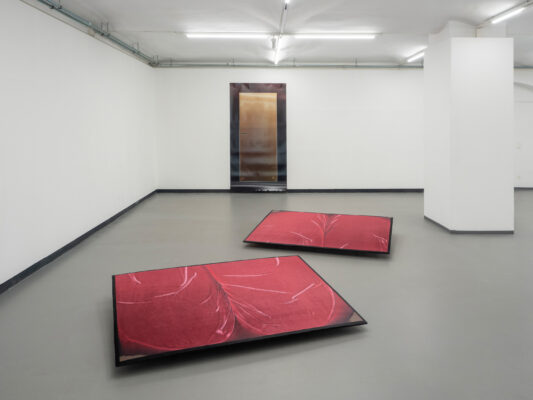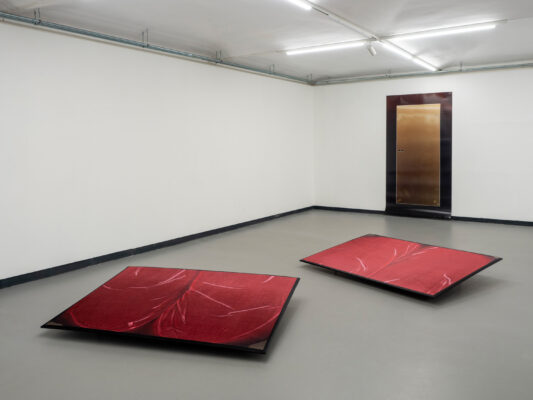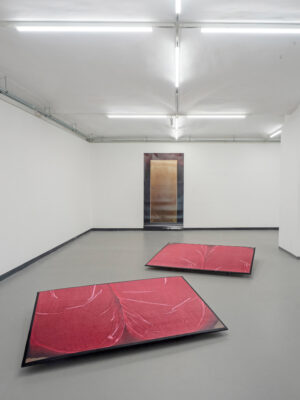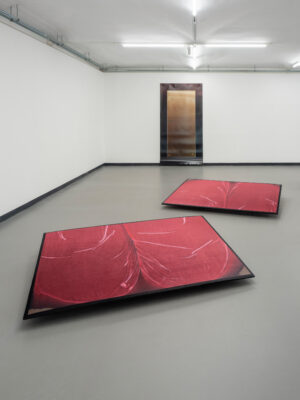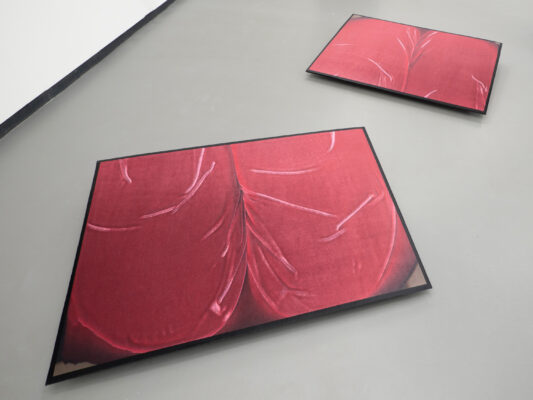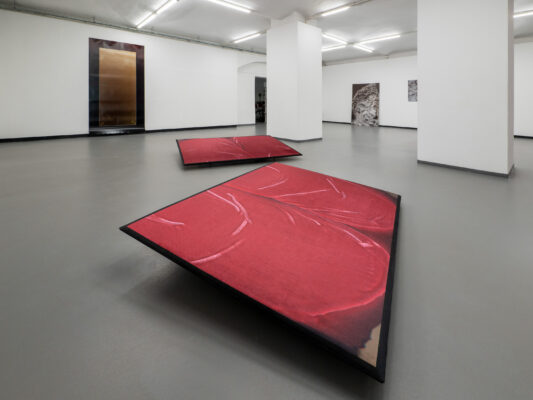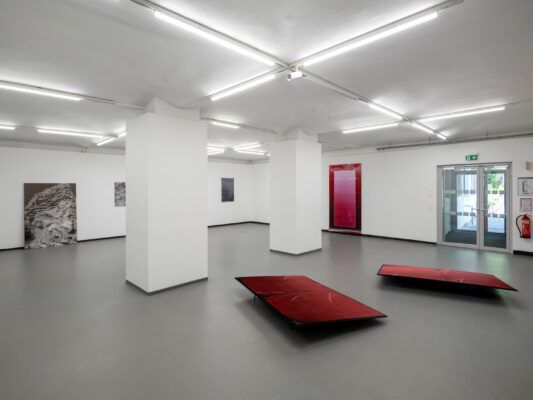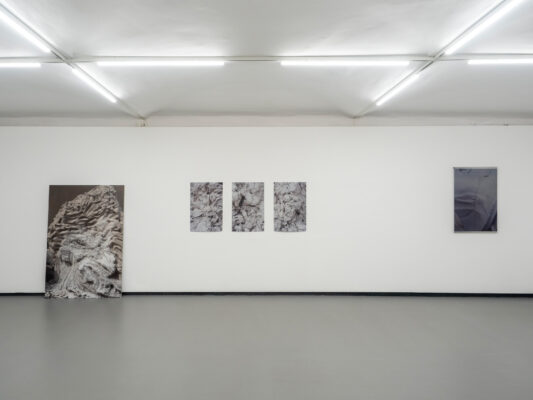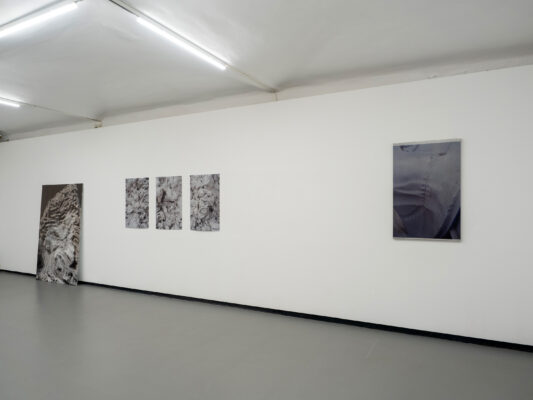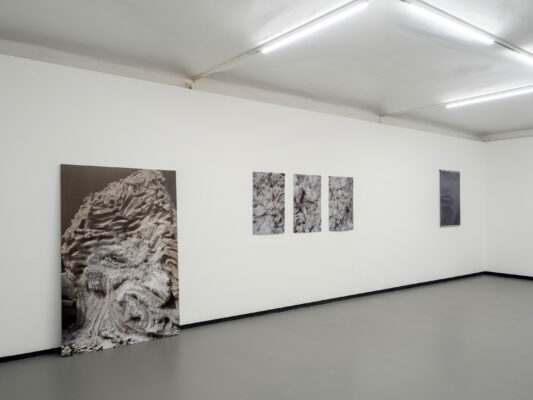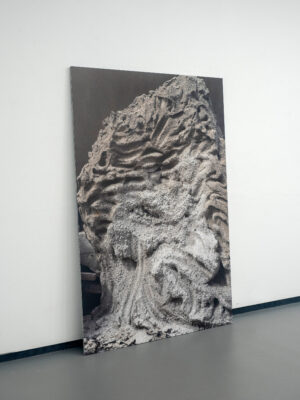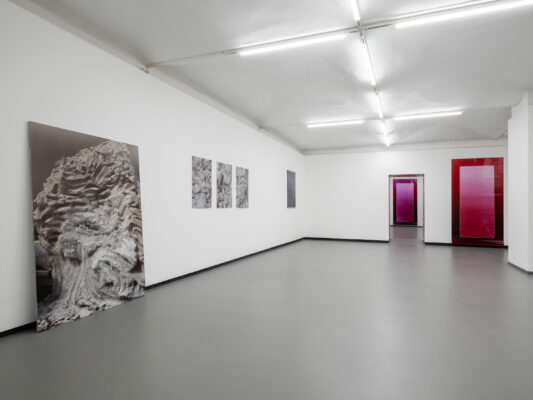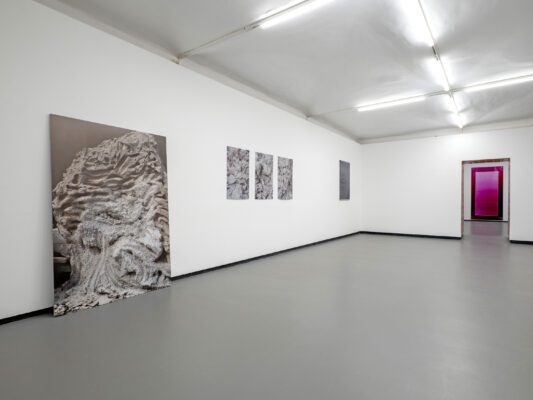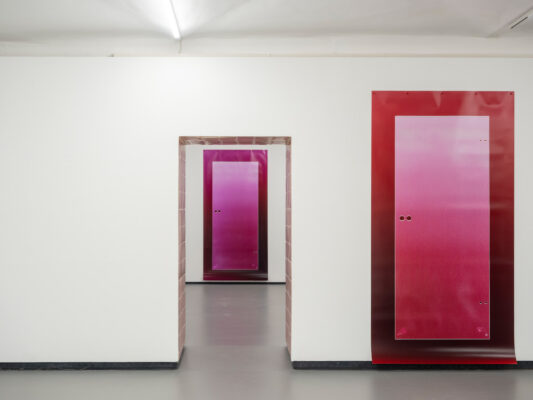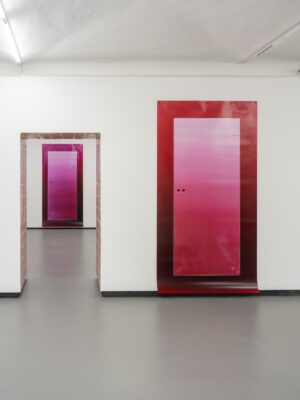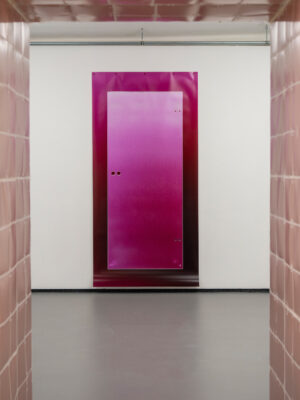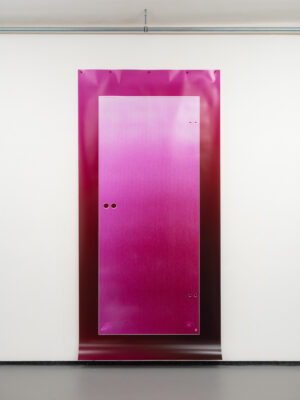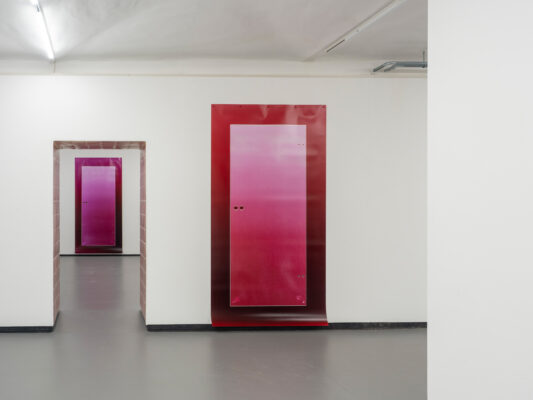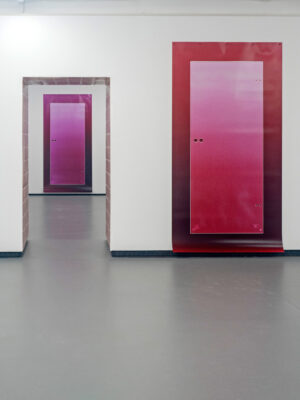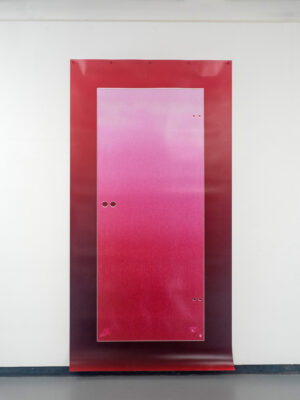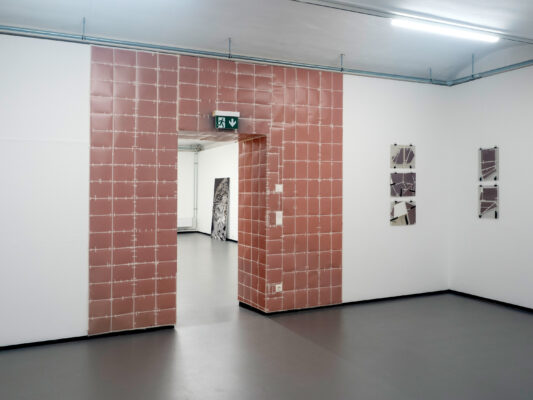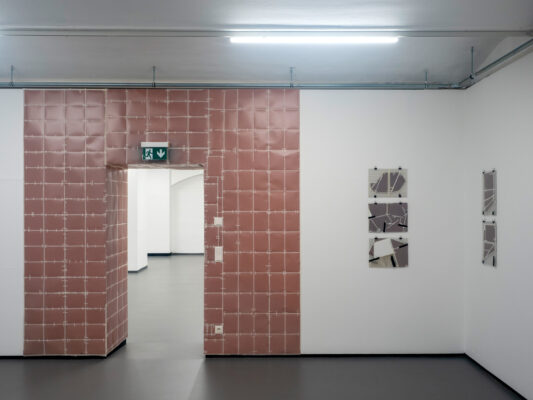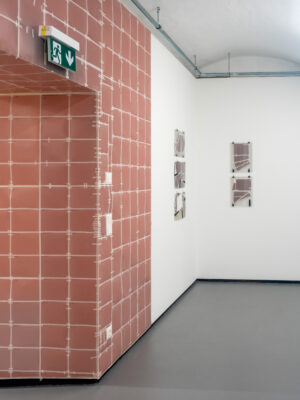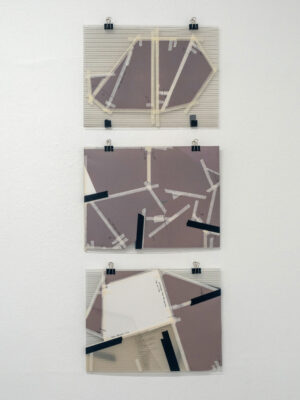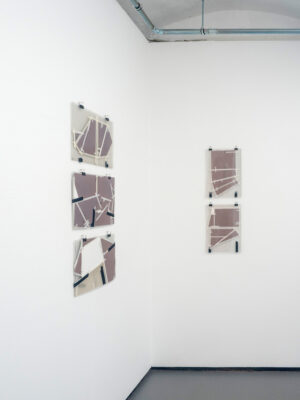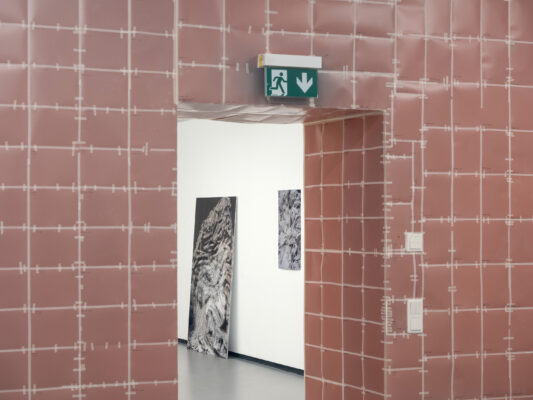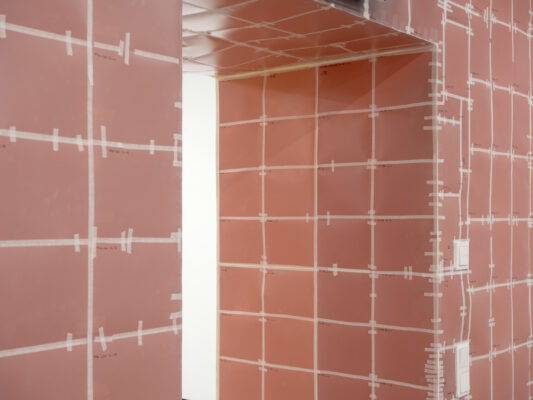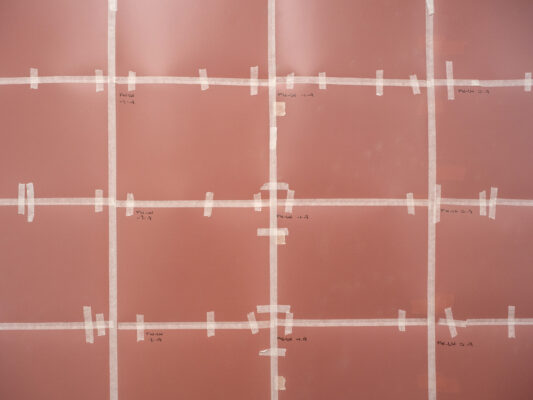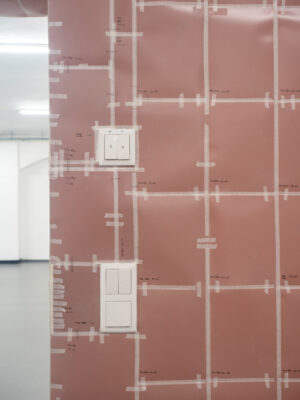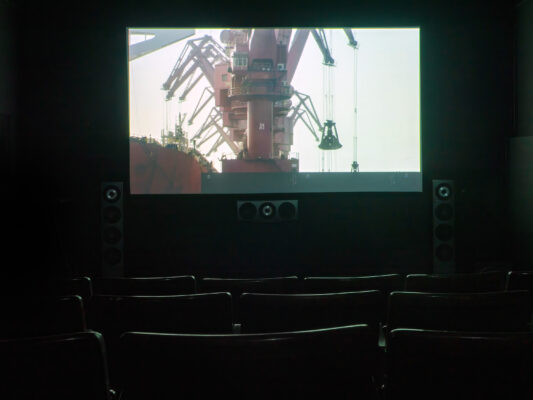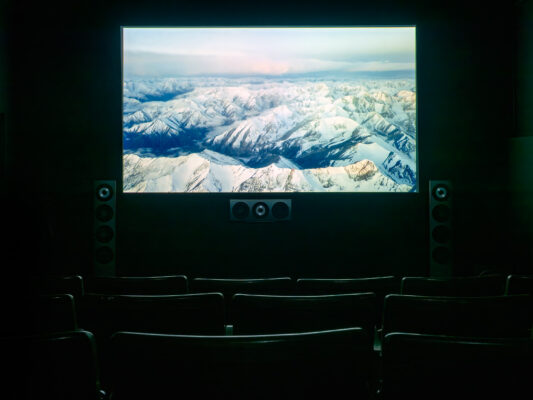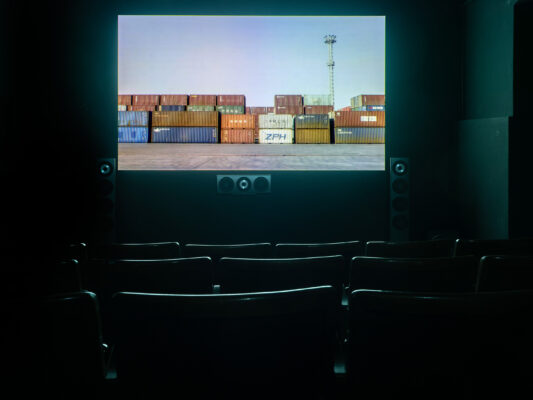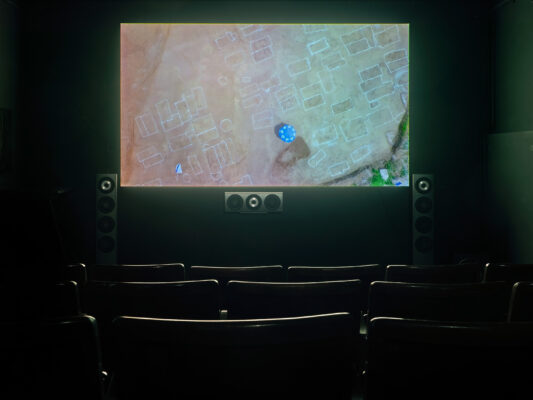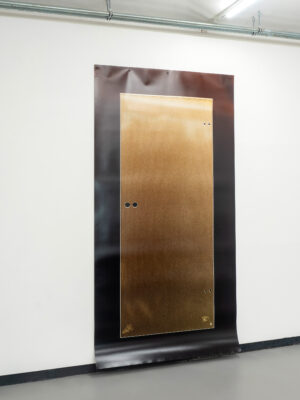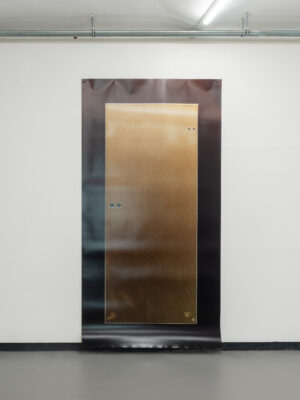Opening: Monday, 23 June, 7 pm.
Opening Speech: Johan Nane Simonsen
Summer party / Finissage: Saturday, 19 July, 5 pm
Performance by PILLE-RIIN JAIK and KLAUS RABEDER: 7 pm
In the visual arts, Verlorene Form is used to refer to a casting mould for making a copy of an art work. After a single use it is no longer functional and must be destroyed. Figuratively speaking, Verlorene Form suggests dissolution, disintegration and thus the loss of structure, order and security. What is left when a form deteriorates or only exists as in fragments? The artists in this exhibition see the lost form as an opportunity for re-evaluation and reflection. They are particularly interested in disappearing traces, the fields of tension generated between material, time and perception, making something out of what is no longer tangibly whole and investigating the zone between no longer and not yet. This can refer to objects that are no longer functional, physical bodies in the process of disintegration, fading memories or lost truths. The works can be regarded as an examination and engagement with the traditional definitions of form, sculpture and body – always in relation to the expanded possibilities of photography. This then leads to fragmentary, abstract and/or poetic works that place the fragility of form and figure, memory and identity at the centre of attention.
With her large format series of unique textile prints on velvet, Headquarters, Judith Huemer investigates the relationship between body, fabric and space. Like diary entries, she sat daily on the glass plate of the scanner wearing every-day clothes and made a scan. This unusual perspective created abstract, symbolic images of folds in the textiles, tiny traces of the human body. The randomness as to how the fabric sits on the scanner and the position of the protagonist determines the temporary folds. Each image is unique and unpredictable. The work questions the regimented and automated social patterns of behaviour such as perfection, order, control, routine as well as aesthetic ideals which is broken by Huemer with the beauty of imperfection and the ephemeral. “The Headquarters series is a plea for giving space to the uncontrolled, incidental and unnoticed, in short, the marginalia that constitute being human. The images unfold the symbolic content of everyday situation with humour, revealing what is invisible but nevertheless registered.” (Ruth Horak, 2024)
Estefanía Landesmann uses photography to draw attention to places that raise issues of temporality: things that have become obsolete in their original function and purpose, discarded materials, outdated architectures and systems of production. In this exhibition she is showing photos from the rubble of a sculptor’s workshop on the periphery of Berlin, plaster casts and moulds for monumental sculptures. After use, these are scrapped and left at the mercy of weather and time. The project uses a semi-archaeological documentation process of two visual art mediums – photography and sculpture – as the point of departure that contrasts and interweaves them to grasp the construction of an absent image. The work is situated in a grey zone between the digital and the analogue and blurs the definitions of natural and artificial, mechanical and manual, real and fictitious as well as figurative and abstract. Printed on metal, the photographs become objects where they meet the textures of the smooth industrial surface. What do we see if the final image has been removed? What is left of the negative’s potential, in the system, that made its creation possible?
Tarlan Lotfizadeh is concerned with forgetting, migration and identity. Her work, Three-Dimensional Essay on Folding Memories can be considered as an attempt of an immigrant to precisely retain and preserve as much of her homeland as possible. It began with the realisation that photography alone cannot fully capture the memory and essence of “home” with all its emotional depths. Lotfizadeh caught the scale, form and lighting of rooms from home using photographic paper made into “three-dimensional photos” and marked them so that they could be rebuilt after being unfolded. Folding up and unfolding can be understood as a metaphor for saving, hiding and rediscovering, viz. the transformation of memory. The unfixed photo paper’s natural fading also points to the attenuation of memories. For the FOTOGALERIE WIEN exhibition she developed a wall installation from photo paper with which she wishes to demonstrate the process behind Three-Dimensional Essay on Folding Memories. The paper is marked so that after it is detached, folded and unfolded, it can be put together again. Lotfizadeh understands the photo paper’s continuous change of colour as an on-going photograph that captures a memory of the public’s presence in the room.
In her series, Shut the Door, Joanna Nencek employs discarded glass doors as huge negatives to make photograms in a darkened room “by placing the huge objects (…) aligned horizontally on prepared photo paper and exposed by a short burst of light from a lamp. After development in a colour laboratory, the rectangular plate of glass can be seen in the red or ochre monochrome images with characteristic round holes at the edges. However, without the associated hinges or door handles, the function of the subjects emerges only after a second glance. In fact, the contours of the reductive form and the haptic qualities of the product’s surface are what is foregrounded. Even though the source materials – glass door and photographic paper – are standard industrial sizes, it is remarkable how a certain alienation effect comes into play. Because of the uneven distribution of light during the exposure, the object and its immediate surroundings in the colour photogram each exhibit their own shading and brightness gradient that ranges from soft to dramatic. So, despite being the same size, there is no danger of mistaking the photograph and what is photographed.” (Dortje Fink)
Petra Noll-Hammerstiel
